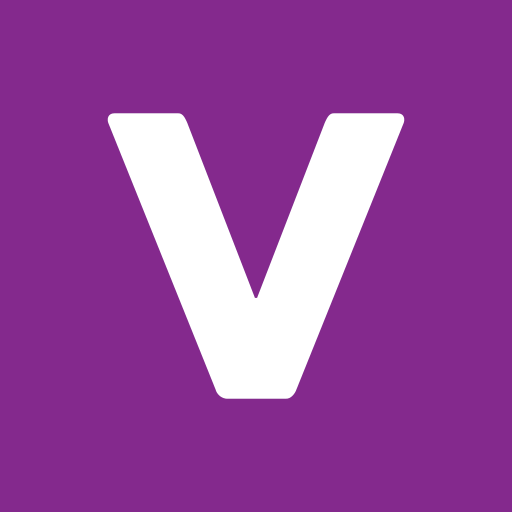Are Google Needs For The Enterprise Cloud Of Anthos To Flagship Feature?
Description of Are Google Needs For The Enterprise Cloud Of Anthos To Flagship Feature?
Anthos, offered last year by Google, is a welcome initiative for companies who want to practice multi-cloud. But is this what Google, the world's third-largest player, needs to truly succeed in the cloud industry?
I scrutinized the announcements from Google Cloud Next '20: On Air, the now digital-only version of the annual developer conference, which spanned 9 weeks. And unlike at the start of this century, there's no doubt that Google is now very serious in the business cloud market. The presence of Thomas Korean at the head of the cloud division is indicative of this, given his experience at Oracle.
The proof? It carefully eschews Google's mainstream roots and directly targets the most profitable segment of the cloud industry: large corporations. In his opening video, Thomas Korean spoke clearly and with great determination, omitting much of the traditional cloud marketing language, and spelled out his mission in terms more familiar to business executives than to developers. , namely "accelerating the capacity of every organization to digitally transform and reimagine its business through data-driven innovation".
A speech that obviously speaks more to companies that put the package in IT than to others. Most CIOs are keenly aware that their aging IT landscape is increasingly stuck in outdated and soled data centers as their boards demand much faster modernization, transformation, and innovation ( although often they provide limited resources to achieve these goals quickly).
This is probably the reason why the first sentence of the main Anthos product page begins with the word "modernization". The message is that Google is not concentrated on being the world's first "pure-play" hyper scalar provider. Comparatively, it is aimed at the market that comforts so many large software companies: other large companies. As we'll see, Google is building a cloud migration path that businesses can easily acknowledge and relate to.
The fact that Google is presenting a data-driven vision for the future is actually a clear nod to its inheritance of taking global data from the internet to build one of the most successful companies in history. This is probably one of his most important and valuable skills, although it is not yet so evident with Anthos.
It is important to understand the main separation between Google Cloud Platform (GCP) and Anthos. GCP is actually closer to AWS and Azure literally. It is a robust, fully cloud-native platform that offers a full range of cloud services. In contrast, Anthos is an open but highly secure environment for the migration, management, and operation of clouds for enterprises. It helps move business applications to the cloud in the most architecturally and process-appropriate way and then makes those applications easier to operate and monitor for all types of cloud resources.
Why Google Cloud is betting heavily on the enterprise market
Thomas Korean presented Google Cloud as a “distributed infrastructure as a service” and not as a brick of IaaS (Infrastructure-as-a-Service). He also described the fact that there is a programming model and an API to execute code as if the Google Cloud were a single, extraordinarily large computer. Simplicity is both a core business IT virtue and a central approach to the Google product. This is the message.Finally, and this is the key point and differentiator in my opinion, Thomas Korean is also clear that Google Cloud works everywhere, period. On their cloud, in existing customer data centers, in the clouds of their competitors (AWS and Azure in particular), as well as in an edge computing setup (citing telecom customers.)
However, Google Cloud is in a very competitive market. Its second-quarter revenue grew 43% year-over-year, allowing it to outperform the cloud market as a whole by a good margin, which is growing at an annual rate of 17% overall. of the sector. But with just $ 3 billion in revenue for the last quarter, it's also one of Google's smaller divisions. And this is what poses a problem for CIOs. Because Google tends to suddenly abandon products in difficulty. For businesses, most IT purchases are long-term, carefully evaluated partnerships where product longevity is a critical consideration.
Can Anthos put Google ahead of cloud providers?
So the big question is whether Anthos is the way for Google Cloud to deliver something that Microsoft Azure or AWS can't or won't adopt? To answer this question, it's helpful to take a look at the core cloud needs of businesses, based on conversations I've had over the past few years with a number of large enterprises CIOs:• The vast majority (80-90%) of the IT budget is spent keeping existing infrastructure and applications running, either keeping them in-house in a data center or outsourcing them to a managed service provider. And this must gradually be aligned with the modern technological world. Ultimately, CIOs want fewer, simpler, easier, more secure, and cheaper operating environments in the future. And in this context, the giant cloud players are well placed.
Why? Because a) they are easier to manage, b) Supplier management is not a headache. So, for most CIOs, the purpose of IT modernization is clear: They need to move everything that makes sense to the cloud. And that represents a good bundle of business IT. Ease of migration, low risk of migration, and cost-effectiveness of migration are therefore at the top of the list of business cloud computing needs.
• The future of IT systems, cloud operations, and IT governance lies in the increasingly popular container model, which is now the gold standard in application development and deployment.
While there is still a long way to go to get most business IT systems container ready, it's safe to say that this is where they will end up in the end. Most new applications today are built to use containers, while many older applications are upgraded to work in containers by their vendors over time.
Kubernetes, the container framework and the hugely popular open-source project - and the most agnostic.
• The bottom line is that CIOs now prefer to acquire or migrate to container-ready IT solutions, for all the benefits they provide. This includes better handling the growing complexity of cloud deployment as well as finding talent to manage the cloud itself (due to the popularity of Kubernetes).
• Hybrid cloud support. There is a very important benefit to leveraging information technology as part of a single operating model or architecture, for density simplicity and choice. CIOs are therefore very interested in using cloud-based technologies and architecture as the default application model, as it allows them to better prepare for the future.
They know they can ultimately move it to the cloud more easily and inexpensively when the time is right. For new projects, even on-premise, that means they have to use their preferred vendor's cloud-based stack of bricks. In short, CIOs want a cloud computing provider that has a platform that works in their data center with the least compromise, while still giving businesses the flexibility to manage all of their cloud computing resources, private or public. , with a single interface.
• A cloud-agnostic approach and proactive support for an industrialized multi-cloud. It's a nuanced subject, but in short, the CIO already knows that he will have too much cloud to manage and that many of them will not be able to work together. Overall, the CIO wants maximum flexibility and choice to move workloads, quickly switch providers, and combine the best services. For example, the artificial intelligence (AI) services of one cloud provider may be better suited, while the IoT services of another cloud player may work better for a given use case. These resources should be easy to use together, even if they are in separate clouds.
The cloud provider who by default assumes it is a cog in a larger enterprise IT architecture and builds bridges to and activates other clouds will have a significant advantage with IT buyers.
• The wide variety of technologies installed on-premise in a large corporation should not be underestimated. The IT portfolio typically includes between 500 and over 3,000 applications for most businesses. Applications and systems are distributed across benefaction of hardware, such as a mainframe, and AS / 400, to first-generation client/server systems, distributed object applications, and native code business applications. In most businesses, most, if not most, computer systems are quite old, but they are also mature and fully functional. But they also tend to carry a lot of quirks and eccentricities that have appeared over time.
• And old technologies aren't the only problem with the cloud. There are also the unique aspects of the industries in which companies operate., ranging from the public sector and healthcare to financial services and insurance, all of which have their own regulations for privacy, security, and other types of regulations that directly impact cloud deployments. Finally, there are geographic issues when it comes to large organizations, from the challenges of distributed IT performance management and data residency requirements to a dense web of privacy regulations and constraints. legal when operations are spread over dozens of different countries. In short, large companies are very complex.
A cloud service provider should tailor its offerings to these realities as much as possible. Or, the customer must devote the time and the investment necessary to this adaptation. This invariably slows or even delays the migration to the cloud for many systems. Multicloud is not the future of the cloud: it is the Future The next big battleground in information technology is who will be the biggest player in multi-cloud. This is where the future of some of the world's biggest tech companies lies. The biggest friction in enterprise-side cloud adoption is the sheer complexity of deploying and managing modern applications across multiple clouds for hundreds of applications and services, which are also increasingly integrated with each other.
Contemporary cybersecurity theory also contributes to this complexity. Here is an example: The recent observation that fixed cloud infrastructures are much easier to attack has spawned new dynamic cloud architectures that can quickly change shape, disappear and recombine in the face of cyberattacks, to be located and configured elsewhere in the cloud, while continuing to operate seamlessly. And this is much more complex to achieve than the old fixed computer architectures and expensive. So, for such reasons, managing complexity is now a fundamental requirement of cloud architecture and operations.
• Fast and smooth migration. The Anthos Migration manual divides existing applications into three different compartments and upgrades them to native cloud architectures since every application is able. The focus on migrating business Java applications, which have been built by companies around the world for more than two decades to run their businesses, is also particularly welcome. Google has data that shows its approach to migrating for business applications that is both simpler and faster than other methods. Migrate for Anthos architectures also one of the most modern and well-structured in the sector.
• The best support for containers. Anthos GKE (Google Kubernetes Engine) is at the heart of Google's cloud computing strategy. AWS was designed before modern containers became a major trend, and while it can certainly handle containers, it is not deeply rooted in product architecture like it is with Anthos. Azure is in a similar case, in that it does not offer containers as a fundamental operational concept. With Google's Kubernetes, the benefit for business customers is that Google provides clear, native migration and operations paths for businesses to robustly containerize their legacy IT systems.
• Multicloud and hybrid ready, also on the management side. Google has made it clear that Anthos can be run and managed centrally, even in the most federated multi-cloud environments, regardless of where the cloud resources are located: In Google's data centers, on-premises, or on-premise, at the edge or in third-party clouds like AWS and Azure. Google does not discriminate and they are all on an equal footing, as far as their location allows. Yes, all of this is possible to some extent on other clouds, but not with the flexibility Anthos offers.
• Support for companies. Google has expected and supports the unique needs of businesses in Anthos, such as the Java emigration path mentioned above, as well as features such as enterprise micro services, server less operation, including on-premises, an approach commendable for true consistency in development and operations wherever Anthos resources are used, and automating IT policy and security seamlessly in multicloud environments with Anthos Comfit Management.
Recent APPS
designkug.com © 2021 • About Us • DMCA Policy • Privacy Policy • Terms & Condition • Contact Us • Submit Apps














